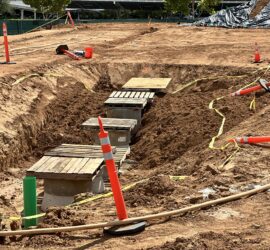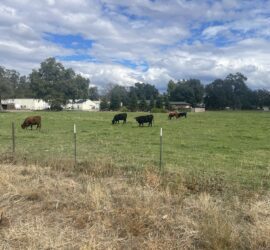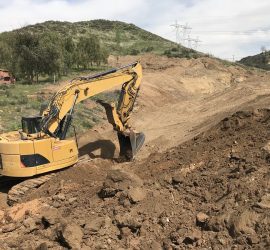Phase 2 Environmental Site Assessment
(Phase II ESA)
A Phase 2 Environmental Site Assessment or a Phase II Environmental report is a scientific test whereby geologists drill and sample soil, soil vapor, and groundwater to test for pollution. A Phase II Environmental Site Assessment is part of environmental due diligence and occurs when there are recognizable environmental conditions (RECs). As such, a Phase One ESA is a prerequisite. A Phase II Environmental Report also follows ASTM Standards under the responsible charge of a professional geologist. Updated April 8, 2024.
Phase II Environmental & Real Estate Due Diligence
The environmental due diligence process assists all parties in a commercial real estate transaction with determining and disclosing the environmental risks and liabilities at hand. The initial task items are usually limited due diligence reports, such as desktop reports or transaction screen reviews. Alternatively, some environmental professionals request all the parties to complete ESA questionnaires and User Data Request forms. Phase One ESAs are the more comprehensive ESA options, which are backed up by ASTM standards and regulatory guidelines.
Not all Phase One ESAs recommend a Phase 2 Environmental Assessment. However, when a Recognized Environmental Condition (REC) or any other environmental issue or condition is identified, there may be a need for phase two. Without a valid Phase One ESA to base on, a subsurface investigation cannot hold the title “Phase 2 Environmental Site Assessment.” Otherwise, it’s just a “limited subsurface investigation.”
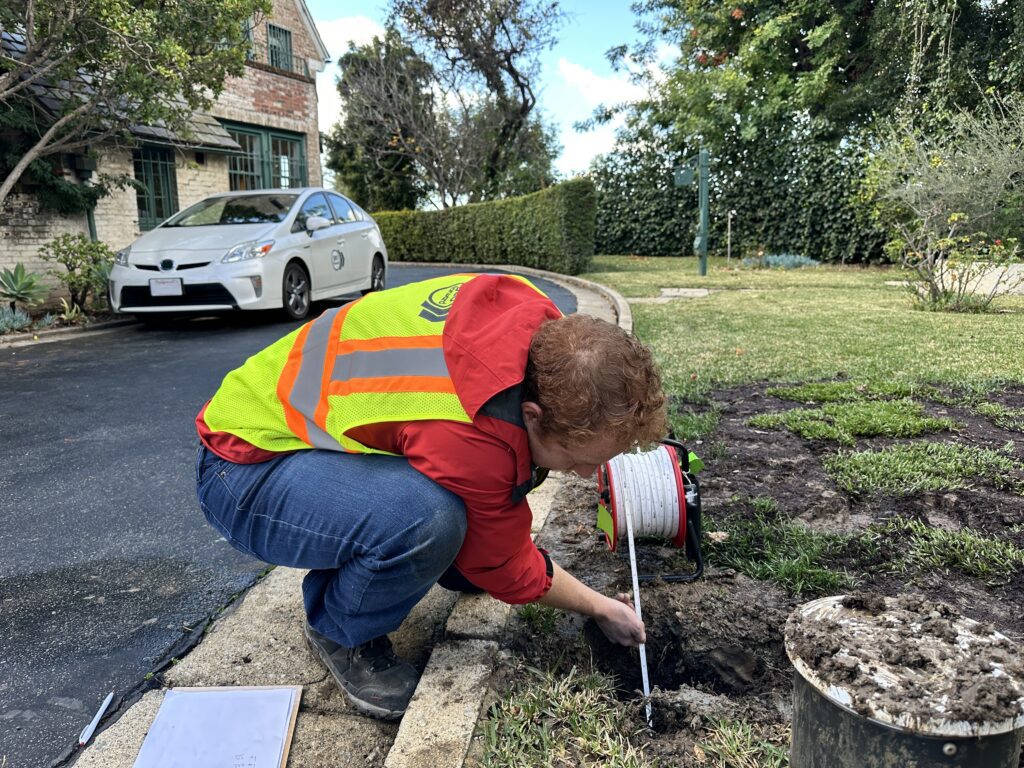
Contamination Cleanup & Remediation
Sometimes, significant soil and groundwater contamination may exist at a site. If so, such contamination typically comes to light during the Phase II Environmental Investigation process. And if the apparent contamination exists at high-enough levels, the Phase 2 Environmental findings may warrant remediation and clean-up action. In such a case, remediation is likely to be the next phase of action.
Additional soil contamination testing and remediation efforts are beyond the Phase 2 Environmental Assessment process. In fact, these processes usually begin after the acquisition, and once the responsible parties report the results of the due diligence reports to the local health department. From there, a remedial action plan is prepared by the environmental engineering consultant. And upon approval of the plan, contamination remediation work commences.
Recommendations for a Soil Management Plan
Often times during a Phase 2 Environmental Investigation, an existing soil contamination condition becomes apparent. As a result, the geologists may recommend remedial excavation upon defining the lateral and vertical extent. In such a case, the Phase II Environmental assessment report is likely to recommend a Soil Management Plan. This plan is a separate document from the Phase 2 Environmental Assessment Report and serves as a guide to legally and efficiently excavate and replace contamination. Similarly, this document applies to underground tank removal projects and grading activities.
The Phase 2 ESA Objective
Ultimately, the Phase 2 Environmental Assessment objective is to determine whether there’s a significant pollution concern or health issue at a property. However, a Phase II Environmental has a limiting scope of work. To clarify, a Phase II Environmental Investigation only intends to check whether contamination exists or not. It does not define the lateral and vertical extent of the contamination. Therefore, if pollution is apparent, the Phase 2 Environmental Investigation is not likely to comprise enough data for a remedial action plan or clean-up estimate. In fact, a proper remediation estimate requires knowing the complete extent of subsurface contamination. As a result, additional contamination testing is necessary after most Phase II Assessment reports.
Key Components of a Phase 2 Environmental Site Assessment
Phase II Environmental Site Assessments have many steps and components. And each project is different due to variable site-specific characteristics. Every project starts with a thorough review of historical land-use and geological conditions, as well as Phase One ESA data. Next, it is mandatory to prepare an OSHA-compliant health and safety plan (HASP) for the project. The Phase 2 Environmental HASP must summarize all possible fieldwork hazards, as well as the chemicals of concern at the site. The fieldwork process comprises drilling and the sampling of soil and soil-gas. Sometimes, but not always, groundwater and indoor air quality sampling for vapor intrusion analysis are necessary. And after fieldwork, the samples undergo chemical analysis in a laboratory. Subsequently, scientists examine the laboratory data and run complex vapor intrusion and human health risk models. Phase II Environmental Assessment detections are also compared against regulatory agency standards and screening levels.
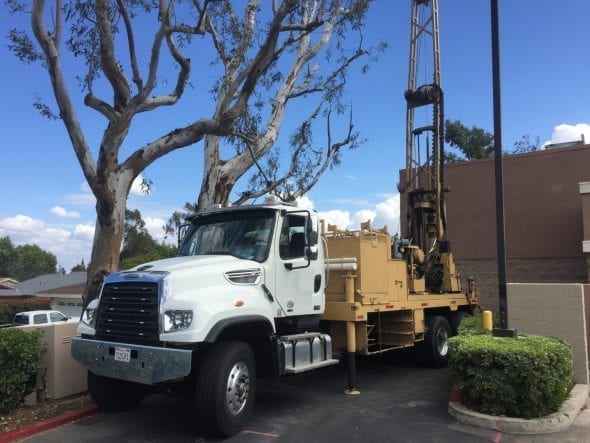
Phase 2 Environmental Scope
In general, Phase 2 Environmental Site Assessments must follow ASTM 1903 standards and regulatory oversight agency procedures. This includes the permitting and health and safety guidelines by local, state, and federal environmental agencies. Variable site conditions and environmental issues result in differing scopes of work. Thus, no two properties are the same and there cannot be a “cookie-cutter template” for Phase 2 Environmental Assessment scopes of work. For instance, the drilling depths, sampling media, and chemical analysis for a gas station Phase 2 Assessment are likely to be dissimilar to a dry cleaner Phase II Environmental Assessment. In fact, the number of sampling locations, depths of drilling, and analytical criteria are only some of the aspects that drastically differ. Other differences exist within the field investigation methodologies, reporting values, calculations for risk assessment, and overall strategy.
What are the Main Steps of a Phase II Environmental Site Assessment?
Of the many steps and criteria necessary to complete a Phase 2 Environmental Investigation, the following list comprises the main steps.
Step 1 – Perform a Comprehensive Review of Site-Specific Data, and Design a Proper Scope of Investigation
Geologists and engineers must prepare entirely new scopes of work for each Phase 2 Environmental Site Assessment. Laboratory testing parameters are also site-specific and are a function of the land-use. For instance, the chemical analysis to perform on soil samples from a gasoline station contamination site, differ from those of dry cleaner contamination site. Similarly, the number of drilling locations, types of samples to collect, and types of drill rigs to use differ from site to site. Additionally, local regulations and standards play a role in the scope of work. For example, the San Francisco Regional Water Quality Control Board has differing contamination standards than the Los Angeles Regional Water Quality Control Board or the Texas Commission of Environmental Quality. As a result, the sampling methods and equipment also vary depending on the jurisdiction.
Step 2 – Obtain all Necessary Permits for Phase 2 Environmental Work
Environmental drilling permits are a general prerequisite to Phase 2 Environmental fieldwork. For example, most projects within the Los Angeles County and Alameda County jurisdictions require a Well & Drilling Permit. The drilling permit application can add to the cost and turnaround time-frame of a Phase II Environmental report. In fact, some agencies can take up to ten (10) business days to process drilling permits. However, it is a mandatory prerequisite of the fieldwork process, and violations can result in fines and disciplinary action. Lastly, most drilling permits need closing out at the completion of work. To do so, most agencies require a closure report that discloses the methods and results of the contamination testing project. Agencies require this to verify that all fieldwork abides by the current environmental laws and regulations and that no occurrences of cross-contamination take place within aquifers.
Step 3 – Coordinate and Perform the Phase II Environmental Assessment Fieldwork
The fieldwork tasks of a Phase 2 Environmental project have to be carefully planned and managed. The processes involve numerous steps that are highly critical to the outcome. Success with Phase 2 Environmental fieldwork heavily relies on strong management, and an emphasis on timing, budgets, and results. Primary tasks include a preliminary site walk, utility clearance marking, geophysical survey, drilling, and sampling. Afterward, borings must undergo proper abandonment procedures, per the environmental drilling permit criteria. Additionally, the field geologist prepares a site map to scale, along with project notes and pictures. And each of these steps has its own set of criteria and complexities, which vary from site to site. Shortly thereafter, environmental professionals commence with laboratory analysis, risk assessment, and the reporting process.
All fieldwork, as well as the other aspects of a Phase Two Environmental Assessment, require the supervision of a senior-level professional geologist with state certification. Standard Phase 2 Environmental Site Assessment fieldwork takes about one to two full days to complete. And additional site visits may be necessary to remove hazardous waste, such as soil cuttings or groundwater.
Health & Safety
Health and Safety is an important pillar of the environmental engineering field. Drillers and geologists encounter numerous safety hazards on site. For instance, heavy drilling rigs with pinch points, open boreholes, and toxic chemicals in samples are all health and safety concerns on Phase 2 Environmental projects. Thus, its a requirement for all field personnel to review site-specific health and safety plans before starting fieldwork. This safety program intends to prevent injuries from occurring at work. Moreover, it helps keep the project in compliance with labor laws and OSHA regulations.
Geophysical Survey & Utility Clearance
Some Phase II Environmental Site Assessments also require a geophysical survey to delineate the extent of underground storage tanks, utility lines, and other subsurface anomalies. A geophysical survey takes place prior to sampling. And it applies electromagnetic and ground-penetrating radar technology to investigate the subsurface. Geologists review geophysical survey data prior to drilling, in order to design the Phase Two Environmental Site Assessment scope of work. Data and results control the quantity, frequency, location, and depths of the Phase 2 ESA samples.
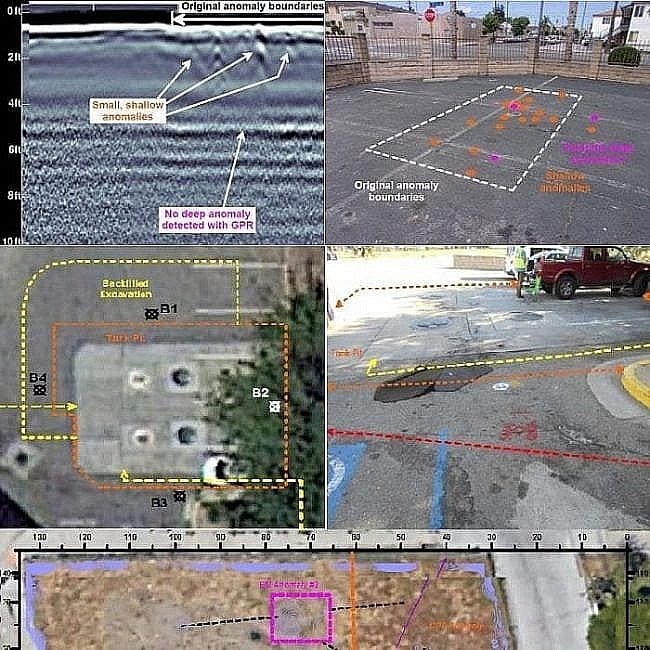
Drilling & Sampling
Under the supervision of a professional geologist, drillers strategically advance numerous boreholes on a property. Modern drilling equipment (such as direct-push or hollow-stem auger drilling rigs) allows for the collection of discrete soil and groundwater samples. And drillers can also construct soil-gas probes within boreholes. These devices provide geologists and chemists with a soil vapor sampling apparatus, which collects gas from specific depths underground. Modernly, soil gas sampling is the preferred media for Phase II ESA testing.
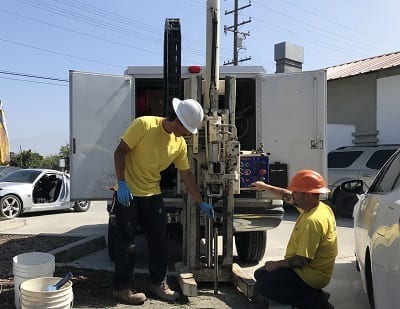
Site Maps & Boring Logs
Informative site maps and soil boring logs are a necessary requirement of the Phase 2 ESA process. At a minimum, these figures document the location, depth, and purpose of each sample. Moreover, these figures demonstrate the sampling intervals, sampling media, and methodology of the fieldwork. Site maps are to scale, and soil logging procedures conform to the Unified Soil Classification System (USCS). And these parts of the assessment also occur in the field by a professional geologist.
Step 4 – Consolidate all the Results and Data and Perform a Technical Risk Assessment
Geologists thoroughly review the project data upon the completion of fieldwork. Data consolidation starts by presenting the laboratory results and the scope of work within tables and text sections of the report. Although the assessment requires more analysis beyond the raw data. For instance, if chemical detections are apparent within the subsurface samples, there must be a comparison against Phase 2 Environmental screening levels. Moreover, geologists use an intricate vapor intrusion model to determine the presence of a toxic vapor migration hazard. To do so, the model requires inputting the site-specific laboratory analytics results, as well as geological and structural engineering values. Ultimately, the outcome helps geologists prepare final conclusions and recommendations.
Data & Analysis
After fieldwork, samples undergo laboratory analysis by chemists. All laboratory methods are in accordance with EPA and ASTM method standards. Utilizing this data, geologists and engineers run risk assessment models and perform toxic vapor intrusion studies. Human health risk models additionally comprise different functions for properties with residential land-use versus commercial land-use. In conclusion, the risk models evaluate whether there’s a potential health concern for occupants on site. Similarly, toxicologists prepare indoor air quality and inhalation risk models. With these methods and more, a Phase 2 Environmental Site Assessment provides reliable conclusions and recommendations for the report users.
Screening Levels
Additionally, scientists also compare contaminant detections against government screening levels. In general screening, levels are not legally enforceable standards. Instead, they are considerable guidelines to determine if potential risks exist. Screening levels also provide some clarity about whether the contamination may warrant further evaluation or not. There are numerous environmental screening levels published by various environmental agencies. The applicability of each publication can vary, depending on the jurisdiction. Moreover, continuous research programs commissioned by environmental agencies advance over time. Thus, screening levels and their applications do change periodically. In some cases, significant exceedances of screening levels in a Phase II Environmental Site Assessment may warrant reporting the results of the environmental due diligence investigation to authorities.
Step 5 – Review all Data and Calculations to Confirm the Reporting of Valid Conclusions and Recommendations
Upon completion of the investigation, all methodologies, findings, and conclusions are reported in a final Phase 2 Environmental Site Assessment Report. Final reports should also include informative data tables and figures that summarize the scope of the assessment. Lastly, per the standard practice of environmental engineering and geology as well as the ASTM and EPA guidelines, recommendations are provided.
Step 6 – Prepare a Final Report with a Professional Geologist’s Stamp and Certification
The final Phase II Environmental Assessment report must include a brief description of the site, as well as the geological background. Moreover, the report demonstrates each course of action, pertaining to the overall objective, methods, and findings. Furthermore, the report provides conclusions and recommendations for the site, basing on the results and concurrent industry standards. Lastly, certification by a professional geologist is mandatory for a Phase 2 Environmental report to be valid.
Phase 2 Environmental Site Assessment Shelf Life
Phase 2 Environmental reports can become obsolete over time. Especially if a property continues its use of a recognizable environmental condition after the date of testing. To illustrate, it’s possible for a gas station underground storage tank to start leaking years after a Phase II Environmental Subsurface Investigation. In such a case, that Phase 2 ESA is no longer representative of the gasoline station. Various agencies have different shelf-life policies for Phase II ESA reports. Thus, a consultation with a professional geologist or engineer is always a recommendation.
Beware of Low-Price Phase II Environmental Site Assessments
Inaccurate and non-representative Phase 2 Environmental Site Assessment results are typically a reflection of a suspiciously low price. Recent case studies have shown suspiciously low bidders drop prices, solely to win the attention of consumers on a budget. However, unknown to the consumer, the scope of work is also usually reduced below industry standards, in order to maintain a profit. This scenario renders a Phase 2 Environmental Assessment essentially ineffective. For example, low-cost contracts have shallower drilling depths, fewer drilling locations, and absent geophysical surveys. This amounts to less sampling in the right areas and hardly any laboratory analysis. Such reductions can make a difference of thousands of dollars. Although consequently, severe contamination and underground anomalies can also be missed due to the omissions.
Quality Assurance
Equally important to a proper scope of work, is the proper quality of work. Usually, a low-cost Phase 2 ESA also reflects on low-quality service. For instance, laboratory equipment method detection limits may not meet the minimum significant figures of the regulatory agency standards. As a result, significant contamination may exist, but there won’t be any detections to reflect that on the Phase II Environmental Site Assessment report. Such results lead to faulty conclusions and recommendations and misleading information.
Reliance Letter for Phase Two Environmental Reports
Phase 2 Environmental Site Assessment reliance letters allow other parties, such as financiers or investment groups, to legally rely upon the document. Particularly, the technical findings and conclusions. This must occur during the lifetime of a valid Phase II Environmental Site Assessment Report. Typically, this letter applies to a prior Phase 1 ESA, as well as the Phase 2 ESA. A reliance letter does not serve as an update or modification to the technical report. The price of a Phase 2 Environmental Subsurface Investigation reliance letter is typically 10% the cost of the overall project.
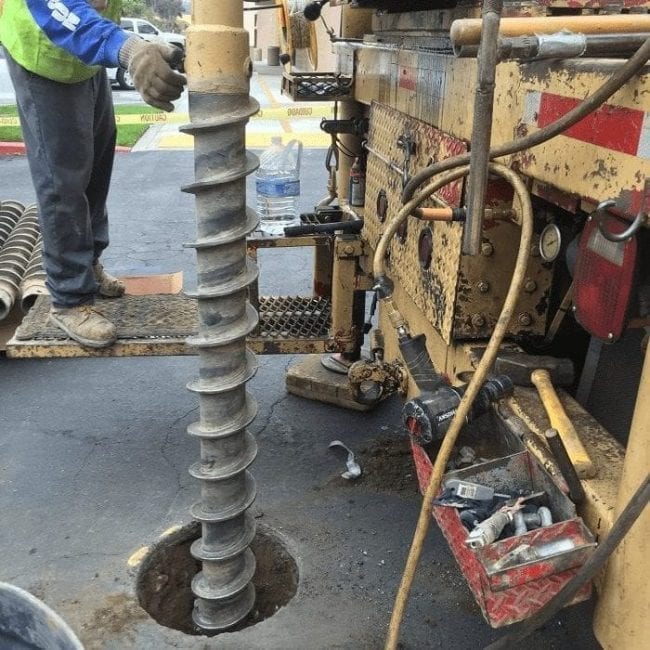
Request a Consultation: (888) 930-6604
Geo Forward is a leading provider of Phase 2 Environmental Reports. For more information, call (888) 930-6604 to speak with a professional engineer or geologist. Alternatively, a consultation can be set-up using the Geo Forward Pre-Consultation Questionnaire. It is fast, easy, and information is NOT shared or sold.
Information Sources:
Cornell Law School Legal Information Institute – CERCLA
Department of Toxic Substances Control – Vapor Intrusion Guidance
United States Environmental Protection Agency – Vapor Intrusion
Interstate Technology & Regulatory Council – Vapor Intrusion Documents

